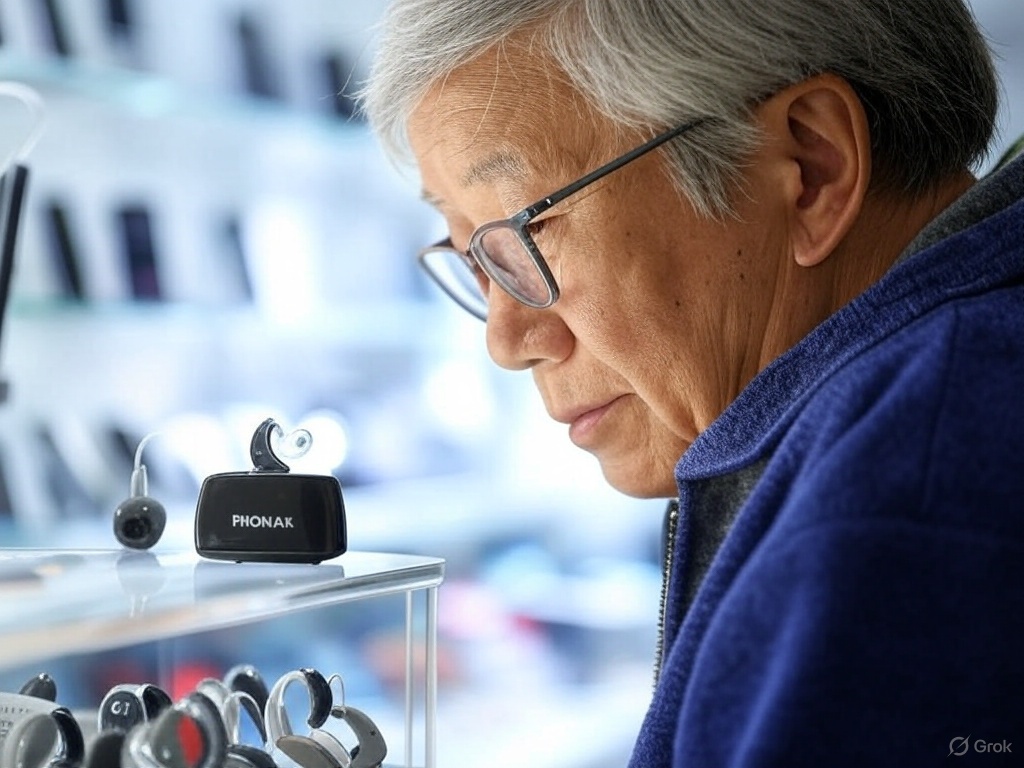1. Determine Your Level of Hearing Loss
The first step in choosing a hearing aid is understanding your level of hearing loss. Hearing loss is typically categorized into:
- Mild: Difficulty hearing soft sounds or understanding speech in noisy environments.
- Moderate: Struggles with conversations at normal volume levels.
- Severe: Requires significantly amplified sound to hear speech.
- Profound: Relies heavily on strong amplification or alternative communication methods.
A professional hearing test from an audiologist will assess your hearing loss and determine the most suitable hearing aid type.
2. Choose the Right Type of Hearing Aid
Hearing aids come in different styles, each with its own benefits and considerations:
Behind-the-Ear (BTE)
- Sits behind the ear with a tube leading to an earmold inside the ear.
- Suitable for mild to profound hearing loss.
- Provides powerful amplification and longer battery life.
Receiver-in-Canal (RIC) / Receiver-in-the-Ear (RITE)
- Similar to BTE but smaller, with the speaker placed inside the ear canal.
- Suitable for mild to severe hearing loss.
- More discreet and comfortable than traditional BTE models.
In-the-Ear (ITE)
- Custom-made to fit entirely inside the outer ear.
- Suitable for mild to severe hearing loss.
- Offers easy control and larger battery size but is more visible.
In-the-Canal (ITC) & Completely-in-Canal (CIC)
- Small and placed partly (ITC) or completely (CIC) inside the ear canal.
- Suitable for mild to moderate hearing loss.
- More discreet, but may have fewer features due to size limitations.
Invisible-in-Canal (IIC)
- Sits deep inside the ear canal, making it nearly invisible.
- Suitable for mild to moderate hearing loss.
- Provides natural sound quality but has shorter battery life.
3. Consider Key Features
Modern hearing aids come with a range of features designed to enhance the listening experience:
- Rechargeable Batteries: Eliminates the need for frequent battery replacements.
- Bluetooth Connectivity: Allows direct audio streaming from smartphones, TVs, and other devices.
- Noise Reduction & Speech Enhancement: Helps distinguish speech from background noise.
- Directional Microphones: Improves sound clarity by focusing on the direction of speech.
- Automatic Adjustments: Adapts to different environments without manual changes.
- Telecoil (T-coil): Enhances listening in public places with hearing loop systems.
- Water & Dust Resistance: Essential for active individuals or humid environments.
4. Budget and Insurance Coverage
Hearing aids range in price from $1,000 to $6,000 per ear, depending on the brand, features, and technology level. Some insurance plans and government programs may offer partial or full coverage. Consider:
- Basic Models: Affordable, with essential amplification features.
- Mid-Range Models: Offers additional noise reduction and connectivity.
- Premium Models: Includes AI-based sound processing and advanced customizations.
5. Get a Professional Fitting and Trial Period
Before making a final decision, consult with an audiologist or hearing specialist for a professional fitting. Many hearing aid providers offer a trial period (30-60 days) to test comfort, sound quality, and usability.
6. Maintenance and Support
Regular maintenance is essential to keep your hearing aids functioning properly. Ask about:
- Warranty and Service Plans for repairs and replacements.
- Cleaning and Care recommendations.
- Ongoing Adjustments to optimize performance over time.
Conclusion
Choosing the right hearing aid depends on your level of hearing loss, lifestyle, budget, and personal preferences. By consulting with a hearing professional and considering key features, you can find a device that enhances your hearing experience and overall quality of life.
read less

